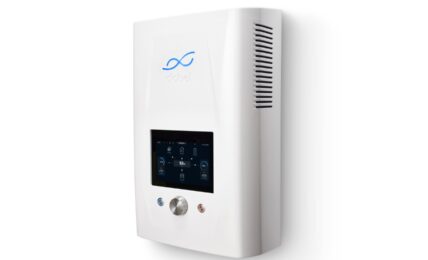Apparel and personal care fiber and technology solutions provider The LYCRA Company announced that the Science Based Targets initiative (SBTi) has approved its near-term, science-based Scope 1, 2, and 3 greenhouse gas (GHG) emissions reduction targets as aligning with a 1.5°C trajectory.
The company’s goals include a new Scope 3 target to reduce absolute GHG emissions from purchased goods and services by 25% by 2030. Notably, many textile companies have reportedly dropped their Scope 3 targets altogether, finding them too difficult to achieve.
The LYCRA Company’s goals also include commitments to reduce absolute Scope 1 and 2 GHG emissions by 50% by 2030 from a 2021 base year.
The LYCRA Company is a global fiber and technology solutions provider to the apparel and personal care industries. The company was founded to create synthetic materials to replace natural resources that were in short supply because of World War II. In recent years it has pivoted to offering sustainable products using renewable, pre-, and post-consumer recycled ingredients that reduce waste and potentially increase circularity.
Gary Smith, The LYCRA Company’s CEO, said:
“We are committed to making positive change in our industry and have set ambitious emission targets because we believe it’s essential for business success, but more importantly, it’s the right thing to do. By making these changes, we can help reduce not only our emissions but those of our customers as well.”
The company is working to meet Scope 1 target by transitioning to lower-impact energy sources at its production sites, such as a project to convert its Maydown, Northern Ireland site to cleaner fuel sources. It is reducing Scope 2 emissions by converting purchased electricity to renewable sources through Energy Attribute Certificates. Sites in China and Ireland have completed this process, and two additional sites are being converted over the next two years.
To reduce Scope 3 emissions, the company said that it works with ingredient suppliers to convert to lower-impact inputs. Over the next several years, the company said, nearly 30% of the company’s current spandex capacity will be converted to bio-derived LYCRA fiber.
Robert Johnston, Executive Vice President of Operations at The LYCRA Company, said:
“This has been a two-year effort to identify and select the best options for our business and create a road map for carbon reduction. That plan includes changes to our processes, products, and key ingredients, as well as securing buy-in from internal and external stakeholders.”


